Tarnów diocese is renowned for the largest number of sacerdotal vocations in Poland. This is also the place from which the largest number of priests go to all corners of the world on mission. John Paul II said about Tarnów region: “The message of eight blessings has been lasting here for ages.”
Faith works miracles as it is miraculous in its nature. Tarnów region, considerably smaller than the area of Tarnów diocese, is strongly associated with many places of veneration of saints. Graces experienced by the worshipers are confirmed not only by oral transmission but also by ecclesiastical commissions. In Tarnów there are as much as three Marian sanctuaries.
Tarnów
In 2006, the Cathedral Basilica of the Nativity of the Blessed Virgin Mary was designated the Our Lady of Sorrows Sanctuary. Recognizing its importance as a place of worship and distribution of Divine Graces, the Cathedral received the privilege of granting plenary indulgence to the worshipers. The 17th c. miraculous figure of Our Lady of Sorrows attracts the pilgrims for over 100 years now.
Second sanctuary, that of Our Lady of the Scapular can be found in Most Venerable Virgin church, one of the most beautiful wooden churches in region. In the Rococo main altar there is situated grace distributing image of Madonna with the Child, which was painted on a board. With the passing of time to the original picture crowns and embroidered robes were added.
Our Lady of Fatima sanctuary, within St. Joseph and Our Lady parish, was established in 2003. First figure of Our Lady of Fatima was sacred there in 1952. The relics of Hyacinth and Francis (blessed shepherds from Fatima) brought from Fatima are surrounded with particular cult. In the Sanctuary the most popular song-book containing songs devoted to Our Lady, known in the whole Poland was created.
South of the region

Sanctuary of the Blessed Virgin Mary in Tuchów is the largest centre of Marian cult in Tarnów diocese. The building is a one-nave church with two side-chapels. The main Baroque altar contains a painting of Queen of the Diocese (as the depiction of Madonna and the Child is called) famous for distributing graces. Already in 1641 the Episcopal Commission confirmed the miraculous power of the picture. Feast of the Tuchowska Blessed Virgin takes place on the second day of July. On the previous day The Great Church Fair begins which last a whole week and gathers approximately 100 000 worshipers.
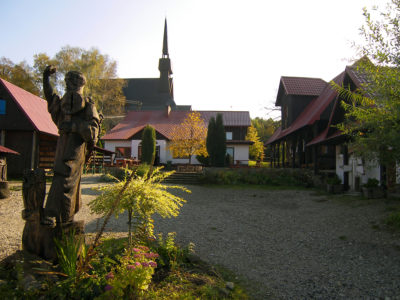
Our Lady of Hope Sanctuary in Jamna was of special interest to Pope John Paul II in terms of its character. It was established thanks to effort of Jan Góra, a Dominican, who at the beginnings of the 90’s of the 20th century started building the Academic Ministry which gained peculiar papal benevolence. The icon of Our Lady of Hope was crowned by John Paul II during a general audience on St. Peter’s Square in 1988 to commemorate the pacification of Jamna village committed by Nazis. In the same year the Pope sacred the corner stone for the church in Jamna, present-day sanctuary.
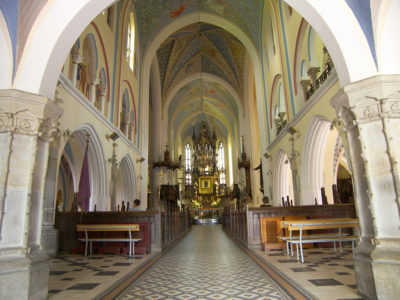
Merciful Lord Jesus Sanctuary in Ciężkowice can be called a unique place. In St. Andrew’s Church, built in the years 1901-1902 it is essential to see the early Baroque picture of Merciful Christ Ecce Homo (wearing a crown of thorns) painted on a piece of wood and situated in the neo-Gothic altar. It was supposed to be the gift of Pope Innocent XI given to one of the priests who participated in the prayers performed for the victory of Polish King John III Sobieski over Turks at Vienna. In 2002 Wiktor Skworc, bishop of Tarnów, declared this parish church a sanctuary.
Painting of Our Lady of Consolation is worshiped in Our Lady of the Rosary, St. John Kanty and Our Lady of Consolation’s parish church in Przydonica. The picture is located in the Rococo-Classicist main altar of the larch church built in 1572. The picture is worshiped in mysteries of the Rosary and mystery of consolation and was donated by king John III Sobieski after his victory at Vienna.
West and north of the region

Porąbka Uszewska houses Our Lady of Lourdes’ grotto, a replica of the original one. The interior is a spacious room in the middle of which a neo-Gothic stone altar is placed. The niche of the outer wall contains a figure of Mary Immaculate.

St. Stanislas bishop and martyr is patron saint of Poland whose birthplace was Szczepanów where sanctuary of his name was established. His relics are enshrined in the parish church. St. Stanislas’ picture, which is believed to distribute graces, is located in the main altar. The trunk of the oak next to which St. Stanislas was to be born is stored in the Nativity Chapel. Nearby, there is a spring where Stanislas’ mother washed the new-born baby. Sanctuary in Szczepanów is the first in diocese to have been visited by two later Popes: Karol Wojtyła and Joseph Ratzinger.
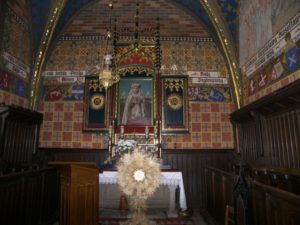
The Sanctuary in Bochnia contains a miraculous picture of Our Lady of the Rosary which from the beginnings of the 17th century was famous for working miracles. Its cult began when the picture covered itself with bloody tears. The protocol ending work of the commission called for investigating the phenomenon advised to develop the worship of Our Lady.
Odporyszów, which is near Tarnów, has been the kingdom of Our Lady revered in the picture of Our Lady of Odporyszów for over 400 years. Her image was brought to the local church in 1570. Since then, her fame as the Protector and Divine Intercessor has continued. The spring, which gushed from the place pointed by Blessed Virgin, saving lives of thirsty soldiers, still exists. Its waters helped many people.
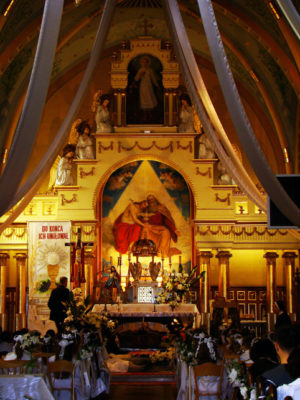
Blessed Karolina Kózka Sanctuary in Zabawa. Both sides of the brown coffin-shape sarcophagus are occupied by kneeling angels protecting the girl with their wings. Her relics are enshrined in a tinny coffin inside the sarcophagus. John Paul II, during his third pilgrimage to Poland beatified Karolina. The ceremony took place during the celebrated mass on 10 June, 1987 in Tarnów.
East of the region
The picture of Our Lady from the sanctuary in Zabawa, near Dębica, probably comes from the 16th century and was painted on the basis of that famous one of Our Lady of Snow. From the very beginning it was truly worshiped. Large number of the worshipers who experienced miraculous power of the picture induced bishop Piotr Gembicki to declare it a miracle-working image in 1641. Leon Wałęga, bishop of Tarnów, crowned the painting with papal crowns on 8 September 1920. The 50th anniversary celebration was attended by metropolitan of Kraków cardinal Karol Wojtyła.
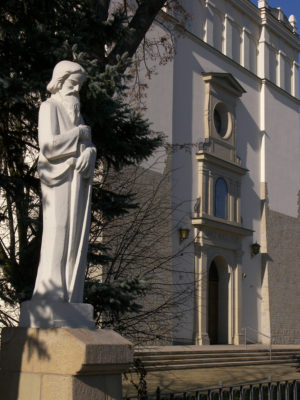
The beginnings of sanctuary in Okulice trace back to times of Bolesław Wstydliwy, prince of Kraków, husband of St. Kinga. He ordered to elevate a chapel in the place of revelation of Blessed Virgin who gave him a sword through her angel as a sign of victory over Tatars. Our Lady of Okulice is famous for healing eyes and being the trustee of family and marriage problems. The miraculous image of Our Lady of Okulice was crowned in 1962. The ceremony was attended by Karol Wojtyła, a bishop at that time.
Marian cult in Pilzno is connected with the beginnings of Polish Christianity. It was propagated by Benedictines, who owned the settlement. The history of the picture of Pilzno begins in the 11th century, though some people claim it was the 9th century. The cult of Our Lady of Pilzno gained particular intensity after a miraculous defense of the city against Tatars in the 18th century. Even Polish kings paid homage to Our Lady of Pilzno. The picture of Our Lady of Consolation comes from the 17th century as the two previous images of Madonna and the Child flamed. Minster, erected by Augustinians in the 15th century, was reconstructed after the successive Pilzno fire in 1865.